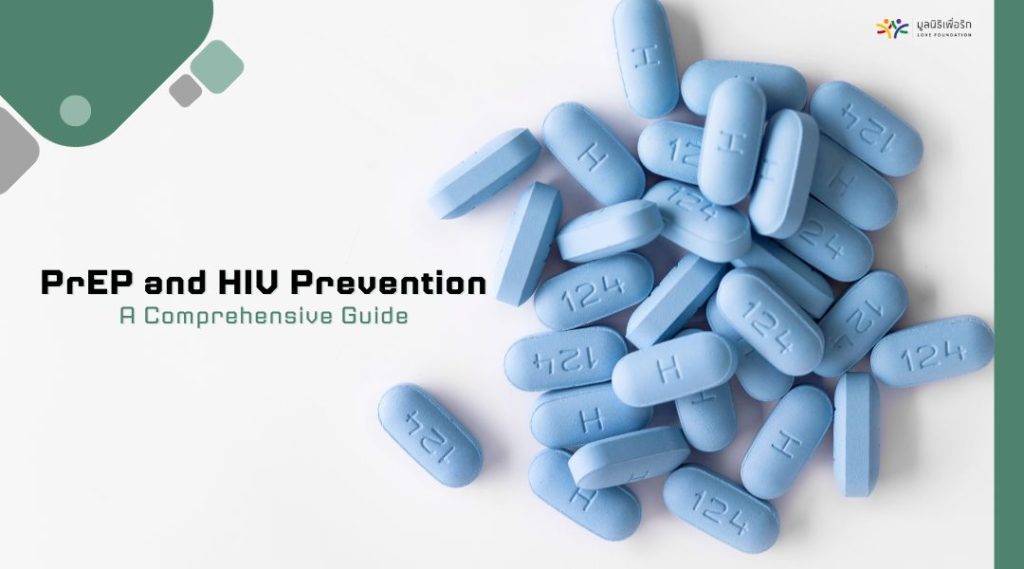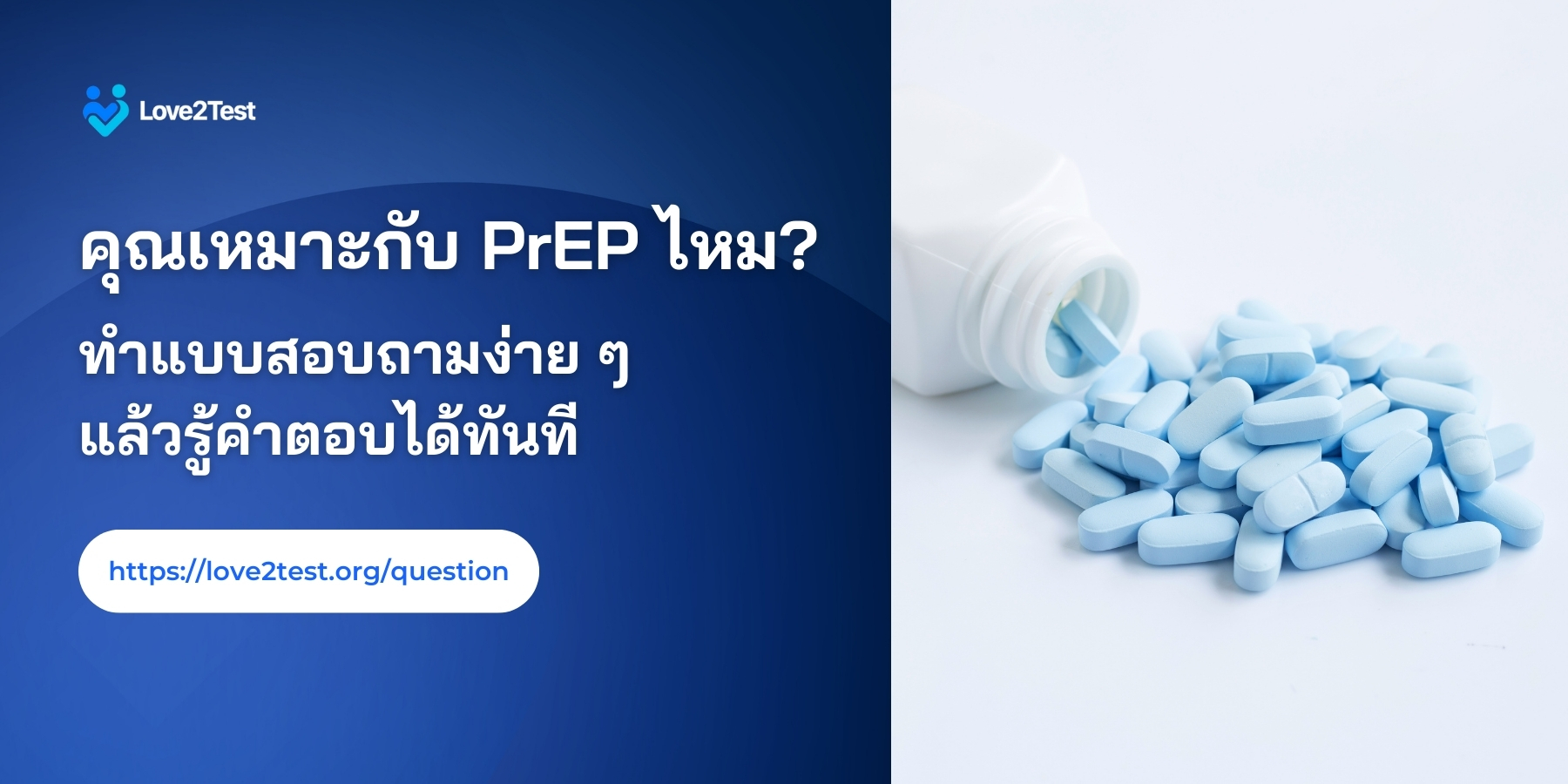In the battle against HIV, prevention has always been paramount. Over the decades, we’ve witnessed significant advancements in HIV prevention methods, with one of the most groundbreaking being PrEP, or Pre-Exposure Prophylaxis. This medical marvel has transformed the landscape of HIV prevention, offering a powerful tool to help individuals safeguard their health. In this comprehensive guide, we will delve deep into the world of PrEP and HIV prevention, exploring its effectiveness, mechanisms, potential side effects, and its role in reducing HIV transmission.
Understanding HIV
The Human Immunodeficiency Virus (HIV) is a chronic virus that affects the human immune system, particularly by destroying CD4 white blood cells, which play a crucial role in protecting the body and fighting off infections and foreign invaders. When the number of CD4 cells drops below a certain threshold, the body becomes highly vulnerable to opportunistic infections and severe complications.
If a person living with HIV is not properly diagnosed and treated, the infection may progress to its final stage, known as Acquired Immunodeficiency Syndrome (AIDS). At this stage, the immune system is severely compromised, increasing the risk of death from infections or cancers that would normally be non-threatening to people with healthy immune systems.
However, modern antiretroviral therapy (ART) can effectively suppress the amount of HIV in the body to extremely low levels so low that it becomes undetectable in standard tests. This not only halts the progression of the disease but also significantly reduces the risk of transmitting the virus to others, a principle widely known as “U=U” (Undetectable = Untransmittable).
For this reason, HIV prevention is a vital component of public health, especially among high-risk populations. A deep understanding of the virus is essential before delving into the topic of pre-exposure prophylaxis (PrEP), a globally recognized and widely used method of preventing HIV infection.
The Birth of PrEP and HIV Prevention
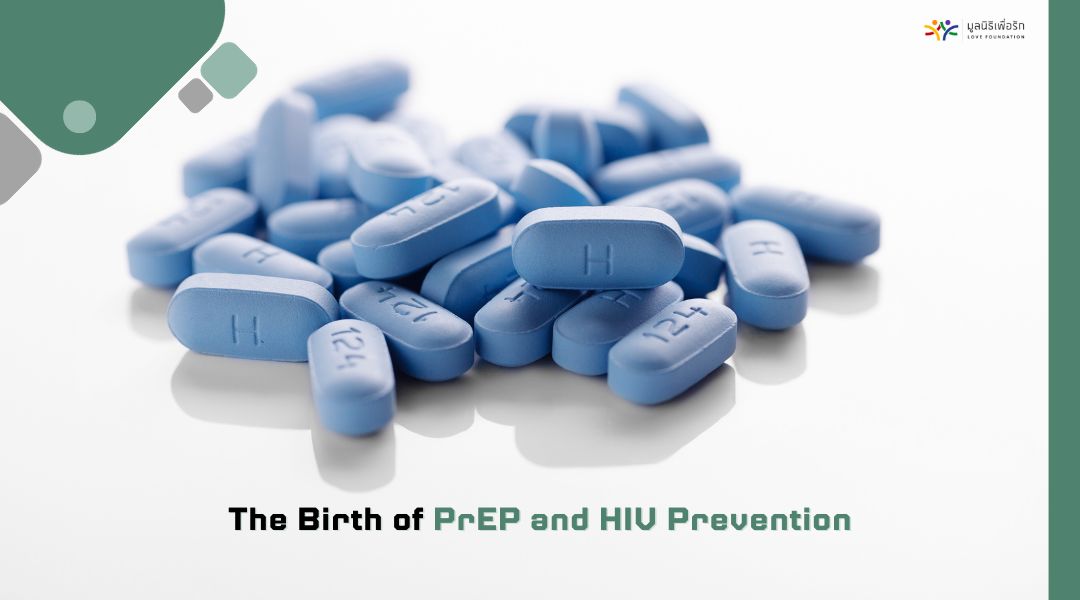
Pre-exposure prophylaxis, commonly known as PrEP, was developed and introduced in the early 2000s as a preventive strategy to reduce HIV transmission among populations at high risk. PrEP works by providing antiretroviral medication to individuals who are HIV-negative but may be exposed to the virus, such as through unprotected sex or sharing injection equipment.
Several major clinical studies, including iPrEx, PROUD, and IPERGAY, have clearly demonstrated that consistent use of PrEP significantly reduces the risk of HIV infection. The level of protection largely depends on adherence to the prescribed regimen.
Due to its high effectiveness and strong body of supporting evidence, PrEP has been endorsed by the World Health Organization (WHO), the U.S. Centers for Disease Control and Prevention (CDC), and public health agencies around the world. It is recognized as a key tool in HIV prevention, particularly when combined with other strategies such as condom use, regular HIV testing, and sexual health counseling.
The integration of PrEP into sexual health care represents a major advancement in medicine and public health. It has transformed HIV prevention from a reliance on external protective methods to a proactive biomedical approach that is effective at both the individual and population levels.
How Does PrEP Work?
Pre-exposure prophylaxis (PrEP) is an HIV prevention strategy that involves taking oral antiretroviral medication. The standard and widely used formulation currently includes two key active ingredients: Tenofovir Disoproxil Fumarate (TDF) and Emtricitabine (FTC), both of which belong to the class of nucleoside/nucleotide reverse transcriptase inhibitors (NRTIs).
The mechanism of these drugs works by interfering with the HIV replication process. Specifically, they inhibit the activity of the enzyme reverse transcriptase, which the virus needs to convert its RNA into DNA and integrate into human cells. When PrEP is present in the bloodstream at effective levels, it can significantly reduce the chance of the virus establishing a permanent infection in the event of exposure.
Clinical studies have shown that consistent and correct use of PrEP can reduce the risk of HIV infection from sexual activity by over 90%, and by approximately 74% in people who inject drugs and share needles. The level of protection depends heavily on adherence to the medication regimen, along with ongoing engagement in sexual health care and regular testing.
Potential Side Effects
As with any antiretroviral or pharmaceutical treatment, the use of PrEP (Pre-Exposure Prophylaxis) may cause side effects in some individuals. However, most of these side effects are mild and tend to resolve on their own without the need to discontinue the medication. Common symptoms that may occur in the early stages of PrEP use include nausea, headache, fatigue, diarrhea, or abdominal discomfort. These typically appear within the first one to two weeks and often subside as the body adjusts to the medication.
In rare cases, PrEP may affect kidney function or alter certain laboratory values, such as creatinine levels or liver function markers. As a result, clinical guidelines recommend routine blood monitoring every three months to evaluate organ function and ensure the ongoing effectiveness of HIV prevention.
Open and ongoing communication between PrEP users and healthcare providers is essential for managing any potential side effects promptly and for building confidence in the long-term use of PrEP as a safe and effective preventive measure.
Although some individuals may experience side effects, the clinical benefits of PrEP especially its ability to significantly reduce the risk of HIV infection are well-documented and substantial, particularly among high-risk populations. Therefore, weighing the risks and benefits in consultation with medical professionals is the most appropriate approach for making informed decisions about PrEP use.
PrEP Effectiveness
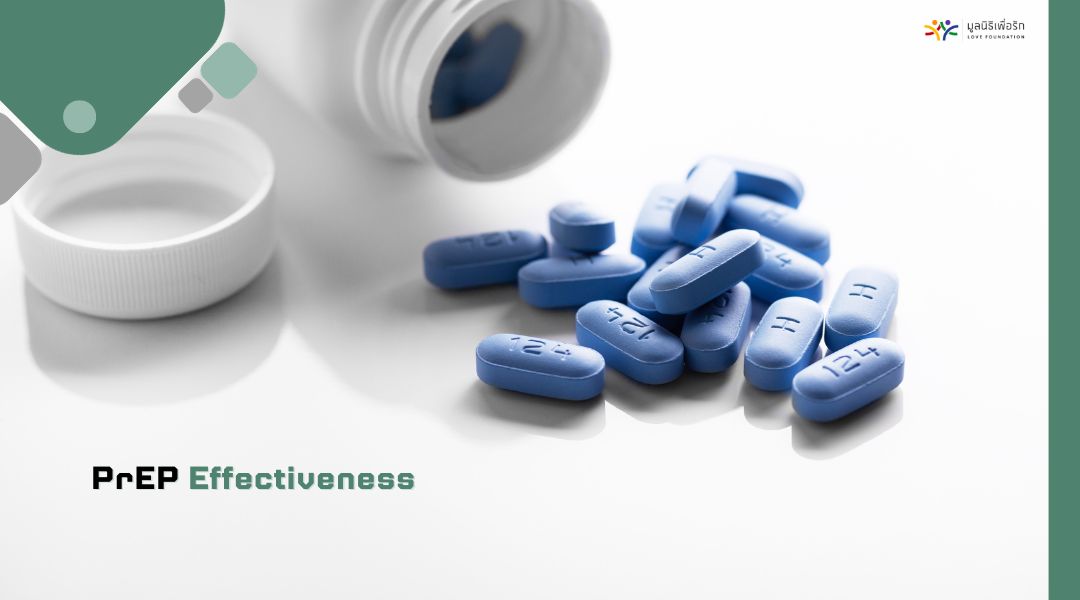
One of the key elements of using PrEP (Pre-Exposure Prophylaxis) is its proven effectiveness in preventing HIV infection, as confirmed by a wide range of scientific evidence from both randomized controlled trials and observational studies in real-world settings.
Numerous studies, such as iPrEx, IPERGAY, and PROUD, have demonstrated that when taken consistently and correctly, PrEP can reduce the risk of HIV infection by up to 99%—especially among individuals who adhere strictly to a daily dosing regimen (Daily PrEP). Maintaining adequate drug levels in the bloodstream is crucial to effectively block the virus from establishing infection.
However, the effectiveness of PrEP drops significantly if users do not follow the prescribed guidelines, such as forgetting to take doses or stopping the medication without medical advice. Adherence is therefore the most critical factor influencing the success of HIV prevention with PrEP.
To maximize protection, PrEP users should undergo regular health check-ups, including HIV testing every three months, monitoring for side effects, and assessing ongoing risk behaviors. These services should be provided by healthcare professionals or trained public health personnel who specialize in delivering PrEP-related care.
The Future PrEP and HIV Prevention
Although oral PrEP (Pre-Exposure Prophylaxis) has been proven to be highly effective in preventing HIV infection, maintaining consistent and long-term adherence remains a major challenge in controlling the epidemic at the population level. As a result, HIV prevention strategies continue to evolve, with the goal of expanding options that better align with individual needs and behaviors.
These scientific advancements not only provide greater flexibility in HIV prevention but also address the diversity of target populations in terms of behavior, health status, and social contexts. Such a tailored approach is crucial to reducing the number of new infections and ultimately achieving the overarching goal of ending the HIV epidemic.
Accessing to PrEP in Thailand
Although Pre-Exposure Prophylaxis (PrEP) has been scientifically proven to be highly effective in preventing HIV infection, access to PrEP among different population groups remains unequal. These disparities are influenced by structural limitations, healthcare service availability, the scope of government policy, and socioeconomic factors.
In the Thai context, the National Health Security Office (NHSO) has implemented a groundbreaking public health policy by officially including PrEP as a benefit under the Universal Health Coverage Scheme (commonly known as the “Gold Card”). This decision marked a significant milestone in Thailand’s HIV prevention efforts.
The policy aims to respond to strong scientific evidence showing that PrEP is highly effective in reducing the risk of HIV infection among high-risk populations, such as men who have sex with men (MSM), transgender women (TGW), individuals with multiple sexual partners, and partners of people living with HIV. When used consistently and accompanied by regular clinical monitoring, PrEP not only serves as a powerful tool at the individual level but also functions as a key public health strategy to lower the overall rate of new HIV infections.
By including PrEP in the national health benefits package, Thailand has taken an important step toward expanding access, promoting health equity, and moving closer to its goal of ending the HIV epidemic.
PrEP vs. Other Prevention Methods
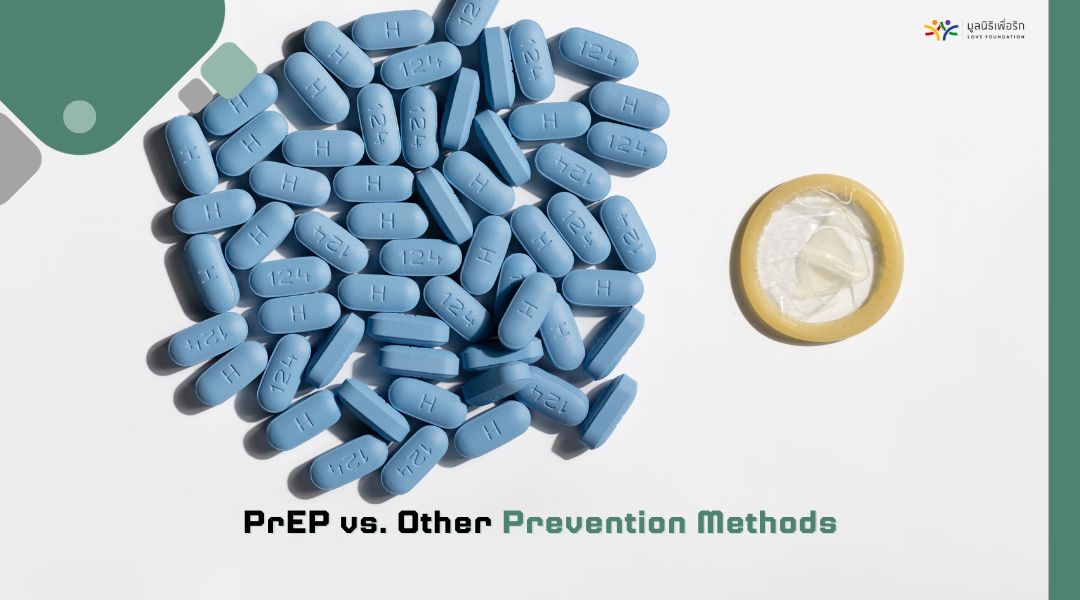
Although PrEP (Pre-Exposure Prophylaxis) is highly effective in preventing HIV infection—particularly when taken consistently and regularly—it does not protect against other sexually transmitted infections (STIs) such as gonorrhea, chlamydia, syphilis, genital herpes, or human papillomavirus (HPV), many of which are transmitted through skin-to-skin or mucosal contact during sexual activity.
For this reason, an effective prevention strategy should follow the model of “combination prevention,” which involves using PrEP alongside other complementary measures, including:
-
Consistent and correct condom use, which helps prevent STIs that PrEP cannot protect against and adds an extra layer of protection against HIV, especially in cases of inconsistent PrEP use.
-
Regular testing for HIV and other STIs, at least every three months, to monitor for potential infections and assess any side effects associated with PrEP.
-
Sexual health and behavioral counseling, which helps individuals understand their specific risks, improve self-care practices, and maintain motivation for ongoing sexual health management.
Understanding the limitations of PrEP and adopting additional protective measures can help build a more comprehensive and effective approach to HIV and STI prevention. This layered strategy not only strengthens protection at the individual level but also contributes to long-term public health goals by promoting what can be thought of as “behavioral immunity” against the spread of HIV and other STIs.
In conclusion, Pre-Exposure Prophylaxis (PrEP) has emerged as a game-changing tool in the fight against HIV/AIDS. It offers a highly effective means of preventing HIV transmission for individuals at high risk. While PrEP is not without its challenges, including potential side effects and access issues, its role in reducing the burden of HIV cannot be overstated. As we look to the future, ongoing research and innovation hold the potential to further enhance our ability to prevent HIV and ultimately bring us closer to ending the HIV/AIDS epidemic once and for all.
References
- World Health Organization (WHO). Guidelines on when to start antiretroviral therapy and on pre-exposure prophylaxis for HIV prevention. Geneva: WHO; 2015. Available from: https://www.who.int
- Centers for Disease Control and Prevention (CDC). PrEP: HIV Prevention Medications (last updated 2023). Available from: https://www.cdc.gov/hiv/basics/prep.html
- National Health Security Office (NHSO), Thailand. Guidelines for Providing PrEP Services under the Universal Health Coverage Scheme. Bangkok: NHSO; 2023. Available from: https://www.nhso.go.th
